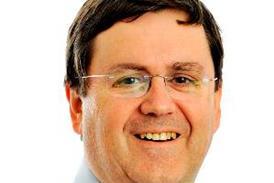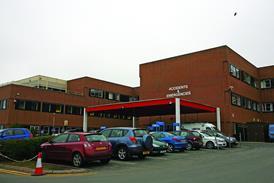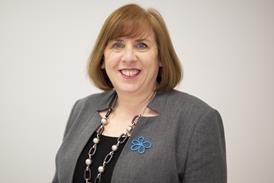- Bradford and Blackpool CCGs to get largest cash uplifts
- New formulas take more account of very high deprivation and of mental health and community care needs
- Winners and losers from the formula changes
New funding allocations which favour more deprived areas will see some clinical commissioning groups receive cash growth of up to 15 per cent next year, with others receiving increases of less than 5 per cent.
In 2019-20, Bradford CCG will receive the largest increase, of 15 per cent, which equates to a cash uplift of £22m. Blackpool CCG will get 12 per cent, which is a cash rise of £31m.
The CCGs receiving the smallest amount of growth are West London and Central London CCGs, although this is because of these areas already being ahead of their target allocations.
The draft allocations were published yesterday by NHS England, though they are subject to approval by its board.
Most cash growth in 2019-20
| Cash growth (£m) | Percentage growth | |
|---|---|---|
| NHS Bradford City CCG | £22.4 | 15.3% |
| NHS Blackpool CCG | £32.2 | 12.1% |
| NHS South Worcestershire CCG | £31.1 | 8.8% |
| NHS Wyre Forest CCG | £11.7 | 8.2% |
| NHS Sandwell and West Birmingham CCG | £52.6 | 7.7% |
| NHS Barking and Dagenham CCG | £19.4 | 6.9% |
| NHS Waltham Forest CCG | £23.7 | 6.7% |
| NHS Corby CCG | £6.6 | 6.6% |
| NHS Dartford, Gravesham and Swanley CCG | £21.4 | 6.6% |
| NHS Coventry and Rugby CCG | £40.6 | 6.7% |
Least cash growth in 2019-20
| Cash growth (£m) | Percentage growth | |
|---|---|---|
| NHS West London CCG | £13.4 | 3.7% |
| NHS Central London (Westminster) CCG | £13.1 | 4.8% |
| NHS Hammersmith and Fulham CCG | £12.9 | 4.9% |
| NHS South Sefton CCG | £12.0 | 4.9% |
| NHS Greater Preston CCG | £13.2 | 5.0% |
| NHS Camden CCG | £18.1 | 5.0% |
| NHS North Cumbria CCG | £23.0 | 5.0% |
| NHS East Lancashire CCG | £27.8 | 5.0% |
| NHS West Lancashire CCG | £7.8 | 5.1% |
| NHS North East Lincolnshire CCG | £11.8 | 5.1% |
The funding allocations have been subject to various new adjustments, resulting in some very deprived areas getting a greater share of England’s total funding, and new weightings to take account of mental health and community care needs.
The adjustments affect the share of the overall pot that each CCG should receive (see table below). But “pace of change” adjustments are then made to ensure the changes take affect gradually.
So West London, for example, has benefitted from the new allocation formulas, but is receiving less growth because it was already ahead of its target allocation.
New funding formula winners
| CCG | Change in target share (%) |
|---|---|
| NHS Fylde and Wyre CCG* | 17% |
| NHS Blackpool CCG | 8% |
| NHS Hammersmith and Fulham CCG | 7% |
| NHS Brent CCG | 7% |
| NHS Bradford City CCG | 5% |
| NHS Isle of Wight CCG | 5% |
| NHS Sunderland CCG | 5% |
| NHS Central London (Westminster) CCG | 5% |
| NHS West London CCG | 5% |
| NHS North Kirklees CCG | 3% |
New funding formula losers
| CCG | Change in target share (%) |
|---|---|
| NHS Kingston CCG | -6% |
| NHS Berkshire West CCG | -5% |
| NHS Richmond CCG | -5% |
| NHS Sutton CCG | -5% |
| NHS Berkshire East CCG | -4% |
| NHS Bromley CCG | -4% |
| NHS Greenwich CCG | -4% |
| NHS Morecambe Bay CCG* | -4% |
| NHS Greater Preston CCG* | -4% |
| NHS Herts Valleys CCG | -4% |
* The target shares for these CCGs have been significantly impacted by a boundary change, in which two GP practices from Greater Preston and Morecambe Bay CCGs have switched membership to Fylde and Wyre.
NHS England said around £1bn per year is set to be “distributed according to the greatest need, with a redeveloped fairer funding formula channelling extra money to places with the highest rates of early death and unmet health needs”.
Chief executive Simon Stevens said: “This funding backs delivery of the NHS long term plan in every part of England for the next five years.
“Tackling health inequalities in our society is not just about fairness but is a matter of hard-headed economics which will not only save lives but also save taxpayers’ money and NHS staff time.
“The public can be confident that the NHS will make every penny count, with data published by the Office for National Statistics yesterday showing productivity for health services in England grew by 3 per cent in 2016-17, over three times the growth for the wider UK economy in that year.”
Source
Source Date
10 January 2019
Topics
- Commissioning
- Community services
- Finance
- Finance and efficiency
- Health inequalities
- London
- Mental health
- Morecambe Bay CCG
- NHS Barking and Dagenham CCG
- NHS Brent CCG
- NHS Bromley CCG
- NHS Camden CCG
- NHS Central London (Westminster) CCG
- NHS Corby CCG
- NHS Coventry and Rugby CCG
- NHS Dartford, Gravesham and Swanley CCG
- NHS East Lancashire CCG
- NHS England (Commissioning Board)
- NHS Fylde and Wyre CCG
- NHS Greenwich CCG
- NHS Herts Valleys CCG
- NHS Isle of Wight CCG
- NHS Kingston CCG
- NHS North East Lincolnshire CCG
- NHS North Kirklees CCG
- NHS Richmond CCG
- NHS Sandwell and West Birmingham CCG
- NHS South Sefton CCG
- NHS South Worcestershire CCG
- NHS Sunderland CCG
- NHS Sutton CCG
- NHS Waltham Forest CCG
- NHS West Lancashire CCG
- NHS West London (K&C & QPP) CCG
- NHS Wyre Forest CCG
- North Cumbria CCG
- North West
- Simon Stevens
- Yorkshire and the Humber


























4 Readers' comments